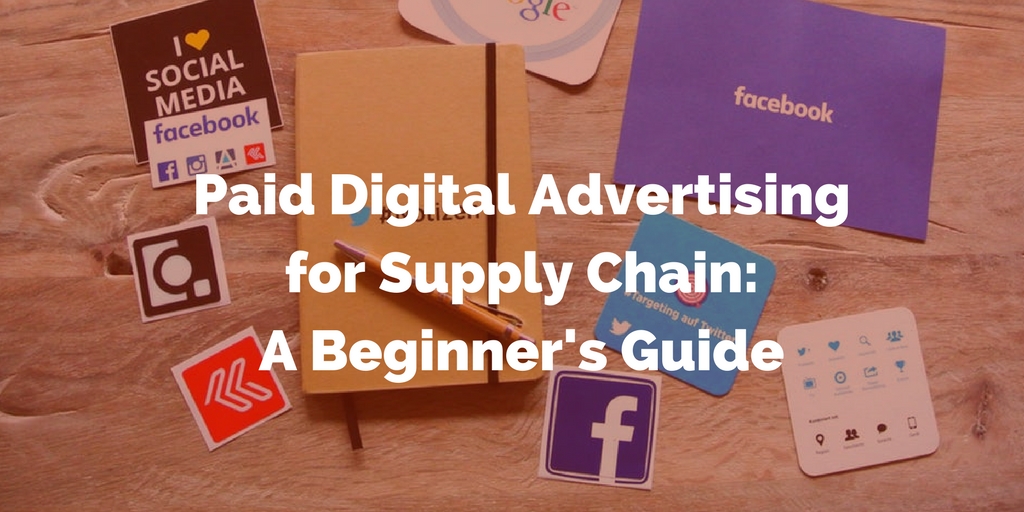
by Jennifer Hart Yim | Jan 29, 2025 | Logistics, Paid Advertising
Having a strong digital presence is no longer optional. Pay-Per-Click (PPC) advertising is a powerful tool for logistics companies looking to quickly generate quality leads and expand their client base.
Here, we walk you through everything you need to know about implementing a successful PPC strategy for your logistics business.
Why PPC Matters for Logistics Companies
The logistics industry operates in a highly competitive space where timing and visibility are crucial. PPC advertising offers several unique advantages for logistics companies:
- Immediate visibility in search results when potential clients are actively searching for logistics services
- Precise targeting capabilities to reach specific industries, locations, and decision-makers
- Measurable ROI through advanced tracking and analytics
- Flexibility to adjust campaigns based on seasonal demands and market changes
Key PPC Strategies for Logistics Companies
1. Strategic Keyword Selection
Success in PPC begins with targeting the right keywords. For logistics companies, focus on:
Transportation-specific terms:
- “freight forwarding services”
- “international shipping solutions”
- “supply chain management”
- “warehousing and distribution”
Location-based keywords:
- “[city] logistics company”
- “shipping services in [region]”
- “local freight forwarding”
Service-specific terms:
- “temperature-controlled shipping”
- “hazmat transportation”
- “last-mile delivery solutions”
2. Creating Compelling Ad Copy
Your ad copy needs to address the specific pain points of your target audience while highlighting your unique value proposition. Consider these elements:
- Include relevant certifications and compliance standards
- Emphasize your experience and track record
- Highlight specialized services or equipment
- Showcase your geographic coverage
- Include clear calls-to-action (CTAs)
3. Landing Page Optimization
The success of your PPC campaigns heavily depends on your landing pages. Ensure they:
- Load quickly and are mobile-responsive
- Feature clear value propositions above the fold
- Include trust indicators (certifications, client logos, testimonials)
- Offer multiple contact options
- Contain relevant content that matches the ad’s promise
4. Advanced Targeting Techniques
Maximize your ROI by utilizing advanced targeting options:
Geographic Targeting:
- Target specific service areas
- Adjust bids based on location performance (this one has proven to be particularly successful for our clients)
- Focus on high-value markets
Audience Targeting:
- Create custom audiences based on website visitors
- Target similar audiences to your existing clients
- Depending on your services, you may be able to use in-market audiences to target
Device Targeting:
- Optimize campaigns for both desktop and mobile users
- Adjust bids based on device performance
- Create device-specific ad copy
Measuring and Optimizing Your PPC Campaigns
Key Performance Indicators (KPIs)
Track these essential metrics to measure campaign success:
- Click-Through Rate (CTR)
- Conversion Rate
- Cost Per Lead (CPL)
- Return on Ad Spend (ROAS)
- Quality Score
- Average Position
Optimization Strategies
Continuously improve your campaigns by:
- Regularly reviewing search term reports to identify new keywords
- A/B testing ad copy and landing pages (even changing one word could improve your CTR)
- Adjusting bids based on performance data
- Optimizing for mobile experience
- Refining audience targeting based on performance data
Common PPC Mistakes to Avoid
Please, don’t do these. These things waste your budget:
- Neglecting negative keywords
- Using overly broad match types
- Ignoring mobile optimization
- Not tracking conversions properly
- Failing to test ad variations
- Overlooking quality score optimization
Budget Planning and Management
Effective budget management is crucial for PPC success:
- Start with a conservative budget to gather data
- Allocate more budget to top-performing campaigns
- Consider seasonal trends in the logistics industry
- Set aside budget for testing new approaches
- Monitor and adjust bids regularly
Future Trends in Logistics PPC
Wanna be with the cool kids? Stay ahead of the curve by testing these emerging trends:
- AI-driven automation in campaign management (yes, even daily budget management)
- Voice search optimization
- Enhanced audience targeting capabilities
- Integration with CRM systems
Conclusion
Remember that PPC is not a “set it and forget it” solution. Regular monitoring, testing, and optimization are essential for maintaining and improving campaign performance over time.
Need help with your logistics company’s PPC campaigns? Contact our team.
Read more:

by Fronetics | Oct 4, 2017 | Blog, Content Marketing, Marketing, Social Media
Here’s a rundown of paid digital advertising options, including display ads, AdWords, and sponsored social media posts.
We are strong believers in content marketing. Build it, and they will come — or, in content marketing speak, publish quality content, and customers will come to you. But, as I often write about, content marketing takes time to bear fruit. There’s not much you can do about that.lick
Except paid digital advertising.
By investing in paid digital advertising, you can boost the reach of your posts, display ads and videos. Pair quality content with a comprehensive digital advertising strategy, and you will be in a position to drive more traffic, create more brand visibility, and close more deals.
Your peers understand this. Within the first quarter of 2017, Facebook, Instagram, Twitter, LinkedIn, Snapchat, and Pinterest saw a 61.5% increase in paid media spend. And that’s only going to increase through 2018.
So where do you start? Here are four ways to get started in using paid digital advertising to help take your content marketing strategy to the next level.
3 paid digital advertising platforms for beginners
Display ads
Display ads are the paid advertisements that appear in front of users on website pages in the form of graphics. Unlike text-based ads, display advertising relies on elements such as images, audio and video to communicate an advertising message. Display ads are commonly referred to as banner ads, but they don’t always take exact banner form. They can come in all shapes and sizes and can appear anywhere on a webpage.
Benefits: Because digital ads are visual, they can be customized with your logo, message, or even an offer to help increase brand awareness. You have the ability to use graphics, video, audio, and your company’s branding to really stand out and attract their attention. Display ads also allow users the ability to target a specific audience. You control which sites they appear on, which geographic area they appear in, and which demographic or niche market they appear to.
Sponsored social media posts
Social media is a natural place to begin if you’re looking to get into paid digital advertising. A good starting point is Facebook. The social media giant’s social ad revenue was more than $9.16 billion in Q2 2017 alone. And it doesn’t stop there. Twitter brought in $548 million in social media advertising revenue in the same period, and Snapchat is expected to reach over $895.5 million in ad revenue in 2017.
Benefits: Running paid social ads allows you to reach a large audience at a low cost. You pay based on the type of ad you’re running. For example if you’re looking to drive brand awareness, you’ll incur a CPM (Cost Per 1,000 Impressions). And not only are the ads relatively inexpensive to run, they’re not expensive to create. You get all of this plus the ability to target your specific audience, reaching people that are interested in learning about what you do.
Google AdWords
Google AdWords places your website as one of the top results on a search engine results page (SERP) when a user searches for certain keywords of your choice. When a user clicks the AdWords link or calls your business using that link, you incur a charge. Otherwise, impressions are free.
Google’s most recent update involves changes to the so-called “3-pack,” or the listing of three related local businesses on a search results page. Many consumers rely on the 3-pack to discover businesses in their area that offer the products and services they are seeking. And businesses get the benefit of many additional leads and customers when they appear in the 3-pack. This can be particularly significant for small businesses.
Benefits: The biggest benefit of Google AdWords is its speed. You appear in a top spot in a user’s search results, meaning you are one of the first things a user sees when searching for a specific product or service. That’s another good point: Google AdWords allows you to focus on people who are searching for what you have to offer, so you don’t pay for a bunch of wasted impressions. AdWords also gives you real-time reports to track your ad’s success. A dashboard shows information related to each campaign, such as the ads clicked, keywords entered by website visitors, cost of clicks and much more.
Related posts:

by Fronetics | Jul 13, 2016 | Blog, Content Marketing, Marketing

Using search marketing as part of your content strategy can increase web traffic and, thus, visibility for your business.
Search marketing, formerly “search engine marketing,” uses both paid (SEM) and unpaid strategies (SEO) to increase traffic to your business’ website. These two efforts work together to improve the likelihood that potential customers searching the internet will find your content.
Let me explain. When an individual searches for something on a search engine like Bing, Google, or Yahoo, the query brings him/her to a Search Engine Results Page, or “SERP.” Since we read from top to bottom, the person first sees the results that fall at the top of the SERP. Studies overwhelmingly show that the further down on the page that a link falls, the less likely someone will click it. What’s more, people rarely click on results beyond the first page. Thus, it is critical to rank as highly as possible on SERPs to entice potential customers to click through to your site.
So, how do you rise to the top? This is where search marketing fits into your content strategy.
SEO (Unpaid)
SEO (search engine optimization) is optimizing your content to improve how it ranks in search engine listings. This requires gaining a basic understanding of how and why search engines classify webpages and then catering to those factors where possible.
The search engine’s goal is to bring the most relevant results to someone who enters a search query. They use complex algorithms to determine how relevant a website is based on the query. So, if you type “best restaurant in Boston,” the search engine will scan the entirety of the internet to bring you a list of websites, in order, that are most likely give you an idea of the best Boston restaurants.
Each engine’s algorithm is slightly different, highly sensitive, and a closely held secret to keep websites from maliciously optimizing their content. Google, for instance, uses about 200 factors in its search algorithm, some of which are public knowledge, and most of which are not. This makes SEO somewhat of an art.
The best bet for optimizing your content is to consider those known factors while remaining true to your content. You want the people who are looking for you to find you. Here are some tips.
1) Use keywords throughout your content.
Algorithms crawl the internet to scan text of all kinds (websites, PDFs, documents, etc.) to find content that matches search queries. Identify several keywords that someone who is looking for products or services like yours might use in a search query, and use them throughout your content. It is likely even more effective when you use keywords in URL titles, headings and subheads, and paragraphs near the beginning of the page.
2) Use keywords in meta tags.
Webpages contain data, called meta tags, that search engines read to understand the main idea of the page. These are invisible to the average reader (unless you know where to look). Most important for SEO are the title tag and the meta description.
3) Distribute content through social media.
Social media is increasingly important to search algorithms because these platforms help determine what content people are using and engaging with organically. Post on your social media channels with links back to your website to improve your social media referral traffic metric and, thus, your SEO.
4) Encourage inbound links.
To understand how trustworthy and authoritative a particular website is on a certain subject, algorithms consider inbound links, or other sites linking to the website. HubSpot has some excellent advice on how to grow inbound links.
5) Make your site mobile-friendly.
As web traffic increasingly derives from mobile devices, search engines are rewarding websites that are mobile-friendly. If your website is not responsive or, at least, optimized for mobile, your search ranking will suffer.
6) Create frequent, quality content.
When you regularly publish content that is valuable to your target audience, search engines will “learn” that you are a trustworthy publisher with up-to-date information. Also, the more your content resonates with your target audience, the more they will post and share it, which means more referral traffic and inbound links, which likewise increase SEO.
SEM (Paid)
Search marketing through paid methods like pay-per-click (PPC) or paid advertising helps get your content in front of your target audience, regardless of how it would rank organically. Google AdWords is the most popular paid search platform used by marketers, followed by Bing Ads.
Google AdWords will show your advertisement to people who search with predetermined keywords. You pay per click, meaning you pay a fee for every person who clicks on your advertisement, regardless of how many people Google shows your ad to.
You can imagine that a number of advertisers vie for the same keywords. Google actually auctions off ad space with each search, ranking ads by bid (how much you are willing to pay per click) and quality score (does your content answer the searcher’s need?). To increase the success of your PPC you should:
- Identify relevant keywords that potential customers might use when searching for your products or services.
- Conduct comprehensive research of keywords with tools like Keyword Planner.
- Speak your audience’s language with dynamic keyword insertion.
- Determine which words you wish to bid on, and create groupings of these words to pair with ads.
- Identify and eliminate irrelevant words unlikely to appear in keyword searches.
Remember, search engines cater to the searcher. So, the more relevant your content is to someone who is searching for you, the more likely they will find you and want to do business with you.
Related posts:



